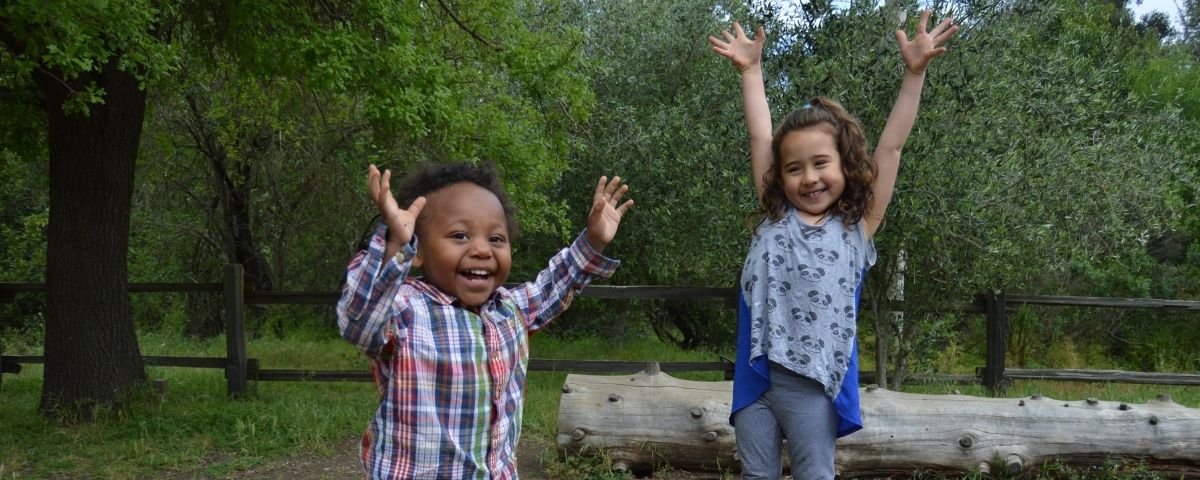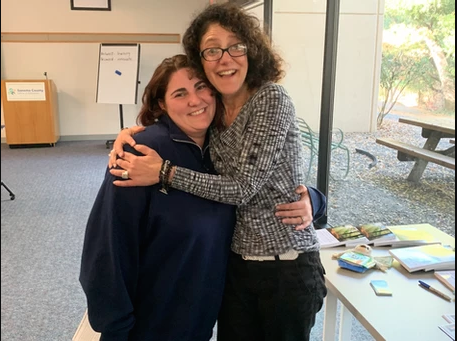30 Games to Nurture Healthy Attachment with Your Child
By Wendy Witham, LMFT
If you are a parent of an at-risk child, it can be difficult to build a healthy and nurturing relationship with your child who may seem uncomfortable and not easily trust you. Do not be discouraged. Many parents, especially foster and adoptive parents, have this problem, and strategies based on the concept of play can help you moving forward.
What are the benefits of play?
Play with parents helps children learn trust, self-regulation, self-esteem, and improves their ability to have fun and experience joy in their attachment relationships. Play becomes an important part of nurturing attachment between adults and children—and among all family members.
Purposeful play focuses on building attachment by attending to needs, creating safety, allowing exploration, and providing attunement to the child’s feelings and experiences. Having a scheduled time for play that focuses on these benefits is helpful along with having time for family fun and recreation. Eating together during playtime is also a nurturing experience.
During times of play, maintaining eye contact, initiating physical touch and verbalizing words of encouragement enhance the experience. Games that facilitate attachment involve the following elements: taking turns, encouraging physical touch, copying each other, following the leader, sharing feelings, and building skills. Parents can adapt games to suit their child’s particular needs.
It is important to be attentive to your child’s experiences. If your child has a history of trauma, you should be aware that “nurturing” activities that incorporate eye contact and touch, could trigger uncomfortable feelings.
To alleviate these triggers, you should invite your child to participate, while allowing your child to lead and be free to say no to something that is uncomfortable. If there is distress, it is helpful to stop, talk, soothe and move to a different activity. With invitations to participate over time, your child should feel more comfortable, trusting and safe.
You may have some creative ideas for games, but here are a few suggestions to start. (Some of these activities are taken from the Theraplay® model):
- Caring of Hurts: Ask your child if there are any “hurts” that need band-aids or lotion or simply blow on the hurt. These can include physical scratches or scrapes, or emotional hurts (a child was teased today at school). Attend to these hurts with empathy.
- Feeding: Have a small snack and drink available. Sit your child comfortably against pillows facing you or on your lap. Feed your child, listen for crunches, and notice whether your child likes the snack or is ready for more. Encourage eye contact.
- Butterfly Kisses: Do a combination of different kinds of kisses— butterfly technique is with your eye lashes fluttering against your child’s cheek.
- Cotton Ball Soothe: Lay your child down with her head on a pillow or on your lap, close her eyes while you gently touch her with a cotton ball around her facial features, commenting on her uniqueness.
- Say Nice Things: Look directly into your child’s eyes and state several positive attributes.
- Features in Mirror: You and your child look in the mirror as you point out his special features.
- The “I Remember When” Story: You can tell a story about your child. This can accompany a feeding activity. Allow your child to listen while eating, and within proximity of each other. The content can be funny or poignant but is often most effective if it describes a time when your child accomplished some new developmental milestone, or a time when you helped meet his needs.
- Wiggly Parts/Stiff Parts: This is an inventory activity as you find which body parts of your child are wiggly or stiff. “I wonder if your nose wiggles” “What about your ears?” “What about your tongue?” etc.
- Beanbag Game: This is a great activity for bolstering structure and engagement in a fun way. Place a beanbag on your child’s head and pick a cue word, for example, “wiggle,” that is shared with your child. You can say a couple of other words beginning with “w” while making eye contact with your child. When you say the cue word, she should drop her head and catch the beanbag in her hands. Your child’s ability to wait, listen carefully, and drop the beanbag at exactly the right time is celebrated. Cues can move from verbal to non-verbal as your child’s skills in reading caregivers improve.
- Clap Patterns: Make different clapping sounds with your hands starting with a simple sequence of claps and allow your child to copy it. Everyone can take a turn leading the clap patterns.
- Hand, Foot, or Body Outline: Lay your child on her back on a large piece of paper and outline her body with a felt pen. Later, everyone fills out physical features while commenting positively— i.e., “black shiny hair, rosy cheeks, strong arms, etc.”
- Head and Shoulders, Knees and Toes: Sing this song while pointing to your child’s body parts when they are named: “Head and shoulders, knees and toes, Knees and toes, knees and toes, Head and shoulders, knees and toes. Eyes, ears, mouth and nose.”
- Mirroring: You and your child are seated or in a standing position while facing each other as both of you have your hands raised in front with palms facing, but not touching each other. You begin to move your hands slowly as your child’s hands must shadow (mirror) your movements.
- “Peanut Butter”, “Jelly”: You say “peanut butter” and your child responds “jelly,” while copying your vocal inflection (loud, soft, fast, slow, etc.). Then your child can do the same for you.
- The Dyadic Dance: You and your child are standing and facing each other while holding hands. Use facial gestures and body movements (a wink of the right eye, a nod of the head) to tell your child to move one step to the right or to the left. You and your child must make good eye contact for this game to be successful and the roles of leader and follower can switch throughout.
- Balloon between Two Bodies: Hold a balloon between you and your child (such as between hips, legs, foreheads, elbows) and move across the room without dropping or popping the balloon. You can make this more challenging by returning to your start position going backwards.
- Balloon Tennis: Hit a balloon back and forth with your child while trying to keep it in the air. You can make this more challenging by seeing if you can hit it back and forth a specific number of times and by increasing the number of volleys if you are successful.
- Bubble Catch: Have your child try and catch as many bubbles as possible before they reach the floor. For an added challenge, have your child use only one body part or get “linked” (holding hands, linked elbows) to another person to catch the bubbles.
- Feather Blow: Both of you each hold a piece of construction paper (or a pillow) in front. Blow a feather from your paper (pillow) to your child’s. Your child must catch the feather on the paper (pillow) and then blow it back. If you have an older child, more than one feather can be used for an added challenge.
- Feather Guess/Cotton Ball Guess: Your child closes his eyes. You lightly touch different parts of your child’s body with a feather or cotton ball. Your child tells you which part of her body you are touching.
- Magic Carpet Ride: Your child sits on a blanket on the floor while you pull her around the room at different speeds, alternating directions by going forward, in circles or zig zags.
- Mountain of Bubbles: Use a large plastic bowl or basin. Fill the bowl about two-thirds with water. Add several squirts of dish soap. Each family member has a straw. On a signal, challenge them to make a “mountain of bubbles.” They can also “blow the mountain down” by gently blowing air at the suds.
- Ping Pong Ball Blow: Everyone lays on their stomachs facing inwards in a circle or facing each other if there are only two people. A ping-pong ball is placed in the center and each person tries to blow it away from themself and toward the other person. Holding hands helps to form boundaries for the ping-pong ball.
- Pop the Bubbles: Blow a bubble and have your child pop it with a particular body part, such as a finger, elbow, and toe or by clapping.
- Toilet Paper Bust-Out: Wrap toilet paper around your child’s arms and body several times and then delight in her strength as she busts free from the wrapping when a cue word is given.
- Wheelbarrow: Lift and hold up your child’s legs while he braces himself on his arms with his head up. Have him move forward by “walking” with his hands.
- Dancing In: Have your child stand on your feet while you support your child with one arm around her back, holding her other hand in dancing form while singing a song, i.e., “The more we dance together, together, together, the more we dance together, the happier we’ll be.” Or make up a song with your child’s name in it.
- Mirror, Mirror on the Wall: Face your child as both of you stand. Move your arms slowly and have him copy this movement as if you are mirror images of each other. This is an especially fun activity to do with facial gestures.
- Popcorn Blanket: Place a small blanket on the floor and tell your child it is a pan to make popcorn. Then add several “popcorns” (pom-poms or cotton balls) to the pan. Have your child hold onto two corners of the blanket while you hold onto the other corners. As the pan “heats up,” use the blanket to make the popcorn “pop.”
- Push Me over, Pull Me up: Sit on the floor in front of your child. Place her palms against yours. On a signal, such as a word or eye blink, have her push you over. Fall back in an exaggerated way. Stretch out your hands so she can pull you back up.
Remember, purposeful play should always enhance a sense of safety and trust for a child. As trust grows, it may be appropriate to invite your child to try an activity even if hesitant. For reassurance, you can ask her, “Should we try this game again?” “If we touch this way, will that feel safer?” “How can we change the game to make it better?” “Let’s do something else, what would you like to do?” or state “We can try this another time.” By utilizing these strategies, you will eventually increase your child’s comfort level and gain your child’s trust through fun interactions and healthier attachment.
Wendy Witham, LMFT, is a therapist in private practice for 30 years who has worked with teens, adults and families around a variety of concerns. As a single adoptive parent with a grown daughter, Wendy is a longtime member of our Help One Child family network.









